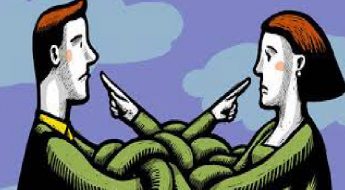
“Something to chew on over breakfast”
I recall sitting on the plane next to a former US Secretary of State who asked me what I did for a job. I told him I’m in the leadership business.
“I don’t consider myself to be a leader”, he quipped, “but I previously worked in the next office to four US Presidents and I noticed a few things.”
“What was the biggest insight you gained?”, I asked
“The taller they are, in terms of capability, the wider their shadow-side.” he replied.
In the context of US presidents, I am sure we can all identify with the great strengths of Bill Clinton. His interpersonal skills are legendary, as is his shadow-side (no one will forget the scandal in the mid 1990’s).
This insight reminded me of one of my own big AHA’s…
We often see the gaps and blind spots in others and overlook the reality that most of them are breed characteristics rather than personal shortcomings. And if our colleagues didn’t have blind spots, there would be no need for a another breed of our type to fill the gaps.
We all need to remember that we may represent the missing 4Character piece required to fill the gaps and complete our team’s capabilities.
All of us know someone that is like a ‘dog with a bone’. They can’t overlook a colleague’s breed weaknesses. It’s as though their target symbolises a Dickensian “ghost from Christmas past.”
The best leaders recognise that great teams comprise all four Character breeds. They learn the four languages and play to each of the breed strengths, rather than focusing on weaknesses.
Having said that, the best leaders differentiate between breed weaknesses and inappropriate behaviour, recognising that “what we walk past, we endorse”.
Food for thought…
Further Reading: Breed Strengths and Weaknesses
Red Characters are typically big picture, innovative types. They like to drive change and can sometimes overlook the detail and forget to take people along on the journey. Colleagues often find them lacking in compassion. When running on adrenalin, Red Characters can get so far out in front, that they run the risk of being seen as the enemy by their co-workers. While not meaning to hurt, their choice of words and style, can at times cut and puncture.
Yellow Characters are also big picture, innovative types. Just like Red Characters, they like to bring about change in leaps and bounds. The main point off difference between Yellows and Reds, is their high emotional intelligence and empathy with others. Like all of the other three breeds they have downsides too. Their dislike for confrontation, can result in them literally feeding the ‘Elephants-in-the-Room’.
Green Characters are practical, caring, and customer-oriented. They like to implement change, one-step-at-a-time. Their focus is on providing others with practical, comfortable, efficient, and safe solutions. Green characters can play a vitally important role in a team. Being a compassionate breed they they have downsides too. Their dislike for confrontation is typically not shown externally – they introvert their hurt feelings and can become passive resistant.
Blue Characters are practical, no-nonsense, and take a “lets cut the cr@p and make a plan” approach. Blue Characters prefer to take change, one step at a time. Their focus is on providing details, processes, and practical solutions. Blue characters can play a vitally important role in a team. They quietly and pragmatically go about implementing the big ideas that Reds and Yellows dream up. Being a tough breed they they have downsides too. They tend to ‘say it as it is’ and can be seen as very blunt.
Some leaders tend to ‘clone’ their own Character breed. Red and Blue Characters, for instance, often gather a posse of their own breed, leaving little space and air for the other breeds to flourish.
“Treat other people as they would like to be treated.”
THE PLATINUM RULE
More information on 4 Characters >
*take the “Which Character Am I?” quiz to see which breed you may fall under!










Thanks Karl and Karyn for your acknowledgements.
We can often be rather critical of others (often even about the relatively small things). A boss who overlooks saying goodbye at the end of the day, for example, can cause unintended and quite deep offence to his/her team.
By the way – is Friday morning the best morning in the week to send out our weekly musings? Geoff
Friday is a great time Geoff. It’s often that time of the week where we are getting worn down and run the risk of reverting to type. Having the opportunity to reflect, finish the week on a high and then nurture that work/life balance over the weekend sets us up well for the week to come.
It’s too easy to get caught in weeds throughout the week and then stay down at the pedestrian level, week after week. Scheduling some reflective Yellow and Red space each week is essential – time to connect with others over a coffee to build trust, and time to go up to the 27th floor to get a Remarkable strategic View. Thanks for your feedback Nick. Great having you on-board last week.
Thanks Geoff for the reflection. I continue to find the social style dynamics fascinating.
Thanks Geoff. A nice reminder for us all.